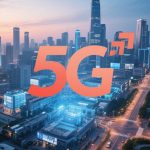Despite the internet’s role as a global equalizer, 3.7 billion people—nearly half the world’s population—remain offline as of 2023. This digital divide persists not due to technological limitations but economic, geographic, and policy barriers. This article dissects the financial challenges of universal connectivity, evaluates innovative public-private partnerships, and explores disruptive models that could democratize access in underserved regions.
1. Cost Analysis of Connectivity
Infrastructure CAPEX: Rural vs. Urban Economics
Deploying broadband in rural areas costs 3–5x more per user than in cities due to:
- Terrain Challenges: Fiber trenching in mountainous or forested regions (e.g., Peruvian Andes) can exceed $30,000 per kilometer.
- Low Population Density: Sparse subscribers make ROI unattractive for traditional ISPs. In sub-Saharan Africa, serving rural users costs 200–200–500 per household versus $50 in urban zones.
- Energy Access: 840 million people lack electricity, necessitating solar/wind-powered base stations that add 40% to deployment costs.
Case Study: Microsoft’s Airband Initiative found that delivering broadband to rural America’s “last mile” requires 15–15–20 billion in subsidies to offset private sector risks.
The Device Affordability Crisis
Even when networks exist, device costs exclude millions:
- Smartphone Prices: In low-income nations, a smartphone costs 60% of the average monthly wage.
- Refurbishment Programs: Organizations like Digital Inclusion Alliance redistribute used devices but face import taxes (e.g., 35% in Nigeria) and e-waste management issues.
- Ultra-Low-Cost Devices: India’s JioPhone Next ($25 4G phone) and Kenya’s KaiOS-powered smart feature phones demonstrate scalable solutions.
Data Poverty: Usage Costs as a Barrier
The Alliance for Affordable Internet (A4AI) defines “1GB affordability” as 2% or less of monthly income. Yet in 2023:
- 1GB of Mobile Data Costs:
- 0.5% of average income in Israel.
- 11.8% in DR Congo.
- 34% in Chad.
- Wi-Fi Alternatives: Community hotspots (e.g., Fiji’s 150+ Digicel zones) offer 1GB/day for $0.10 but require upfront infrastructure investments.
2. Public-Private Partnerships (PPPs): Successes and Failures
Facebook’s Aquila Drone: Lessons from a Grounded Project
Meta’s (formerly Facebook) Aquila aimed to deliver internet via solar-powered drones flying at 60,000 feet. Despite initial tests in 2016, the project was shelved in 2018 due to:
- Technical Hurdles: Limited payload capacity (10 Gbps vs. target 30 Gbps).
- Regulatory Battles: Airspace coordination conflicts with aviation authorities.
- Business Model Gaps: Unclear revenue streams for partner telcos.
However, Aquila’s legacy lives on in Loon (now defunct but inspired stratospheric balloon projects) and Airbus’s Zephyr drone program.
Google’s Taara: Optical Wireless Links
Taara, part of Alphabet’s X Lab, uses invisible light beams (Free Space Optical Communication) to transmit data between towers:
- Speed: Up to 20 Gbps over 20 km.
- Cost: 70% cheaper than fiber in terrains like India’s Assam forests.
- Deployment: Partnering with Bharti Airtel to connect 500 villages by 2025.
Limitations: Fog and heavy rain disrupt signals, necessitating hybrid RF-FSO systems.
World Bank’s Digital Economy for Africa (DE4A)
DE4A funds national broadband projects with conditions:
- Infrastructure Sharing: Mandating tower/duct access for multiple ISPs.
- Open Access Networks: Wholesale pricing models to encourage competition.
- Outcome: Senegal reduced broadband prices by 60% after enforcing infrastructure-sharing laws in 2021.
3. Alternative Business Models
Community Networks: Grassroots Connectivity
Decentralized networks built and operated by local communities:
- Guifi.net (Spain): 120,000+ user-owned nodes delivering free Wi-Fi in rural Catalonia.
- Zenzeleni (South Africa): Africa’s first community-owned ISP, offering unlimited data for $5/month.
- RuralWeb (Indonesia): Mesh networks powered by repurposed routers and TV white space spectrum.
Sustainability: Most rely on grants initially but transition to membership fees (e.g., Guifi’s €3/month voluntary contributions).
Blockchain-Based Decentralized ISPs
Startups leverage blockchain to democratize infrastructure financing:
- Althea Network: Users earn cryptocurrency by sharing bandwidth via rooftop antennas. Piloted in Colombia and the Philippines.
- Helium: A crowdsourced LoRaWAN network where individuals host hotspots to earn HNT tokens. Over 1 million hotspots deployed globally.
Challenges: Token volatility (Helium’s HNT lost 95% value in 2022) and regulatory uncertainty.
Hybrid Satellite-Terrestrial Networks
LEO satellites complement ground infrastructure:
- Starlink’s Village Wi-Fi: Schools in Rwanda pay $200/month for 100 Mbps Starlink terminals, shared via local Wi-Fi.
- OneWeb’s Government Partnerships: Alaska’s tribal communities access telehealth via OneWeb’s low-latency (70 ms) satellite backhaul.
4. Policy Interventions for Equitable Access
Universal Service Funds (USF): Reforms for the 21st Century
USFs, funded by telecom levies (1–5% of operator revenues), often underperform due to:
- Misallocation: Nigeria’s USF diverted $500 million to unrelated projects between 2010–2020.
- Bureaucratic Delays: Brazil’s “Nordeste Conectado” took 7 years to approve rural fiber grants.
Successful Models:
- Chile’s Subtel: Transparent auctions for rural projects, achieving 90% coverage.
- India’s BharatNet: $13 billion initiative connecting 250,000 villages via fiber, albeit with last-mile execution flaws.
Dynamic Spectrum Sharing
Allocating underutilized spectrum (e.g., TV white spaces) to lower entry barriers:
- Citizens Broadband Radio Service (CBRS): In the U.S., the 3.5 GHz band is shared among incumbents, priority licensees, and public users.
- Kenya’s White Space Pilot: Microsoft and Mawingu Networks deliver rural broadband using unused TV frequencies, cutting costs by 80%.
Device Subsidy Programs
- Pakistan’s Prime Minister’s Laptop Scheme: Distributed 1.2 million laptops to students since 2013, boosting internet literacy.
- Estonia’s Digital Nomad Visa: Offers tax incentives for tech professionals to relocate, indirectly funding local infrastructure.
Conclusion
Bridging the digital divide demands a mosaic of solutions: PPPs to mitigate risks, community networks to empower locals, and policy reforms to ensure equitable resource allocation. While technologies like LEO satellites and optical wireless links reduce physical barriers, sustainable access hinges on addressing the affordability paradox—those who need connectivity most can least afford it. Governments must prioritize digital access as a fundamental right, not a market commodity. As hybrid models emerge, the goal should shift from mere connectivity to meaningful participation in the digital economy, ensuring no one is left offline in an increasingly connected world.














